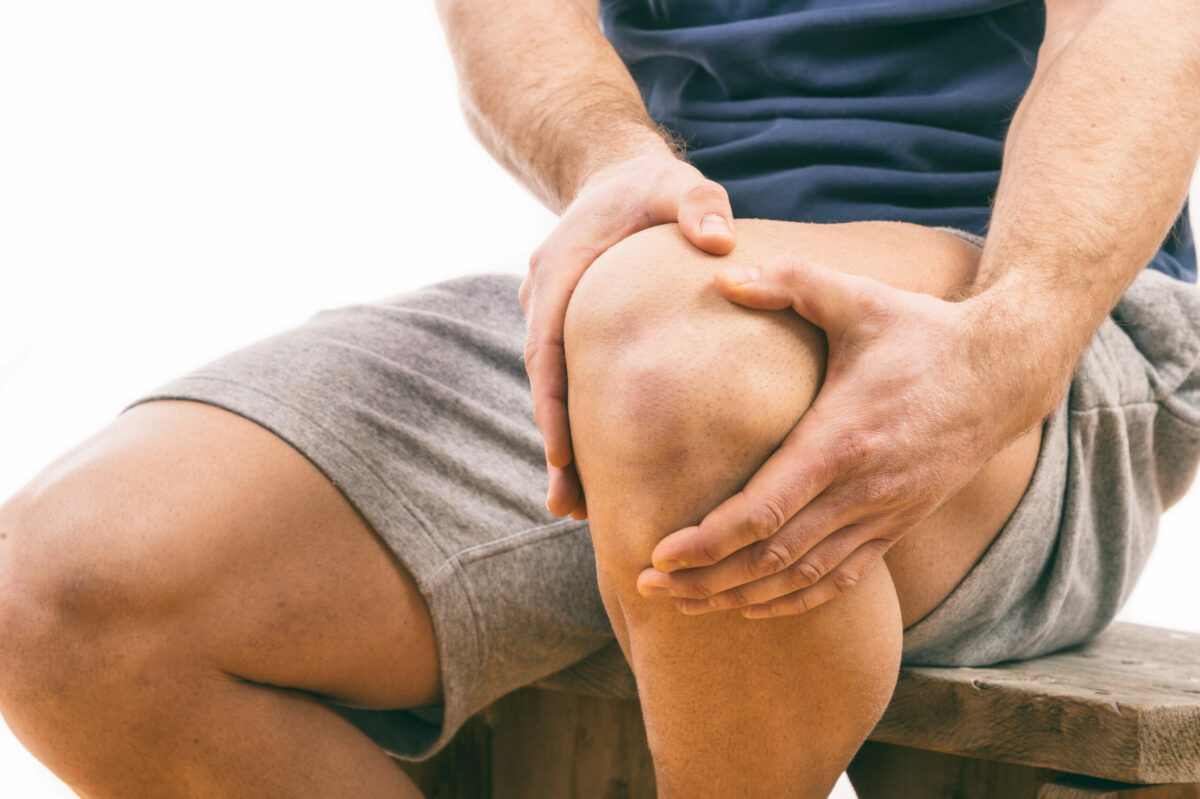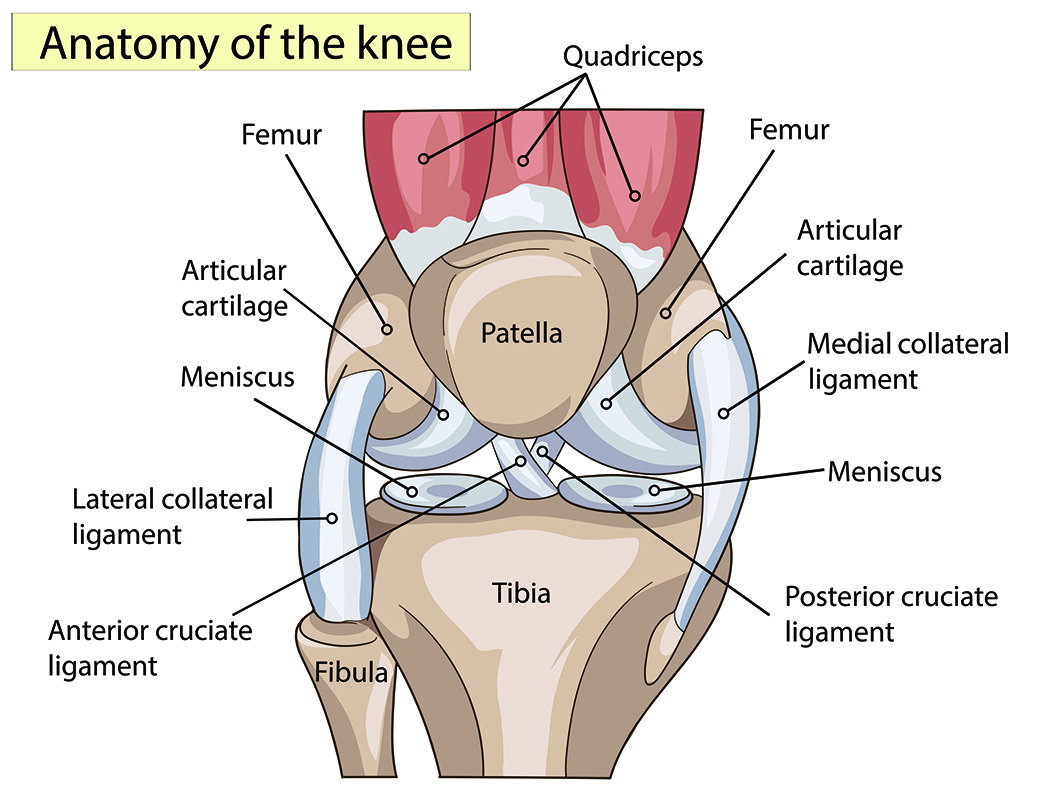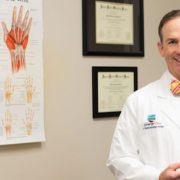
Knee pain is fairly common among the general population. As people age, wear and tear from work, sports, or life in general can take a toll on the joints. But if you experience a loud pop in the knee followed by pain, then the chances are you have more damage than standard knee and joint pain. If you felt a pop in your knee and now have knee pain, learning the knee anatomy, common reasons for the knee injury popping sound, and what the popping noise can mean will help you find your specific injury and the potential treatment options.
Knee Injury Popping Sound and Knee Anatomy
Understanding the knee anatomy will help provide useful information to determine the cause of a loud pop in the knee followed by pain. The knee is a hinge joint that connects the femur (thigh bone) to the tibia (shin bone) and allows the patella (kneecap) to glide along the femur.
 There are two types of cartilage within the knee:
There are two types of cartilage within the knee:
- Meniscus: A C-shaped cartilage that works as a shock absorber between the femur and tibia. There is a medial meniscus (the larger meniscus on the inside of the knee) and the lateral meniscus (on the outside of the knee).
- Articular cartilage: A smooth, white tissue that provides lubrication on the femur, tibia, and back of the patella.
Along with the cartilage are four primary ligaments of the knee:
- Cruciate ligaments: The cruciate ligaments cross in an X to connect the femur to the tibia. There is an Anterior Cruciate Ligament (ACL), which is the ligament in the front, and the Posterior Cruciate Ligament (PCL), which is the ligament in the back. These control the front and back motions of the knee.
- Collateral ligaments: The collateral ligaments are located on the sides of the knee. The Medial Collateral Ligament (MCL) is located on the inside of the knee and connects the femur to the tibia. The Lateral Collateral Ligament (LCL) connects the femur to the fibula. These ligaments help keep the knee stable.
With a basic knowledge of the knee anatomy, determining the cause for a loud pop in the knee followed by pain will help indicate the cause.
Why a Popping Noise Happened and What It Means
If you hear a loud pop in the knee followed by pain and swelling, there is achance you have done damage to your knee. However, not all popping is indicative of structural damage in the knee. The popping sensation can come from several possibilities such as an overrotation or pivot in the knee, landing funny from a jump, or a collision. There can be many injuries that the pop in your knee can lead to:
- Ligament injury: Injuries to one of the four ligaments in the knee, such as an ACL tear, can occur from a sudden change in direction, sudden stopping or slowing, landing awkwardly, or a direct blow to the knee. These injuries are common in sports, but they can also happen at work, in an accident, or even at home. Along with intense pain, an injury to one of the ligaments can also be associated with:
- Knee instability
- Loud pop in back of knee followed by pain
- Tenderness
- Swelling
- Difficulty or inability to walk
For more information about preventing knee injuries, check out this video.
- Meniscus tear: A meniscus tear is one of the most common knee injuries in athletes, though you don’t have to play sports to get one. They commonly occur when you twist or rotate too much, but they can also happen in squatting positions.
- Patellar tendon tear: The patellar tendon connects the patella to the tibia. A patellar tendon tear usually occurs from landing wrong from a jump, falling, or having weak tendons in general.
- Cartilage injury: Knee cartilage injuries can happen from pivoting or turning the leg and bending it.
Treating an Injury Following a Pop in the Knee
Depending on the type of injury will determine the treatment plan. Each type of injury listed can be treated either by nonsurgical treatment or surgical treatment. Getting an evaluation from your physician will determine the course of action for you to take. Nonsurgical treatments may use knee braces, physical therapy, RICE (rest, ice, compression, elevation), or anti-inflammatory drugs. More severe injuries to the knee may only be treated with surgery to repair or replace a ligament, tendon, or cartilage.
If you had a loud pop in knee followed by pain and want an evaluation, you can schedule an appointment or call (919) 220-5255, and our EmergeOrtho—Triangle Region expert physicians will help you Emerge Stronger. Healthier. Better.







